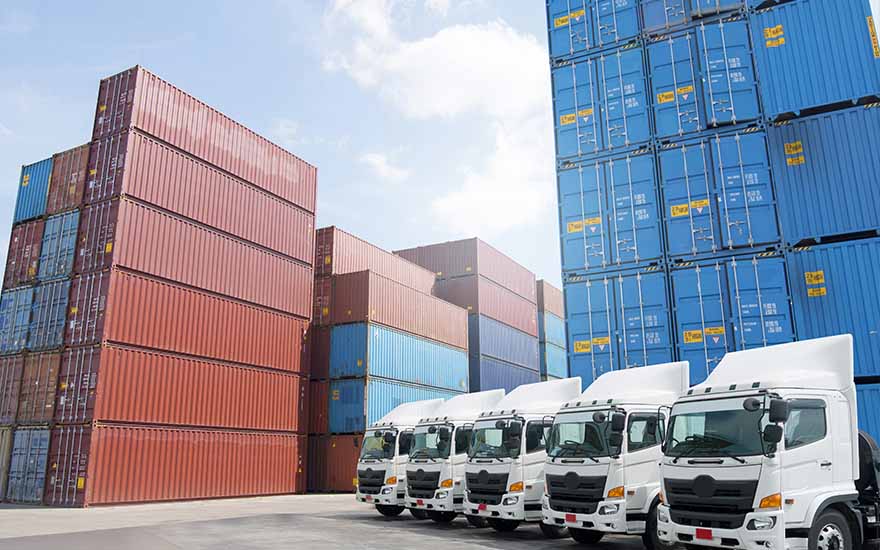Technology is transforming transport and logistics
Published on 16/11/2022 in Innovate
The major challenges facing transport and logistics today are forcing the sector to look outside the familiar context. The use of technology quickly leads, often in a relatively simple way, to greatly increased efficiency.

High diesel prices, rising wages, heavy traffic so that more time is needed to reach a destination, the road tax for trucks, the shortage of drivers, more administrative hassle; the challenges for the transport and logistics sector are substantial. Especially because customers want to receive their orders faster and faster without paying more for them. To reconcile those two developments, data-driven innovation is the message.
No innovation without vision
“Very often there’s not simply a ready-made solution for the challenges of a logistics company,” says Francis Duvivier, Business Developer & Solution Manager at Proximus. “Detailed research is involved, case by case. In addition, a company must always ask whether the return on investment for an innovation project is positive. Technology can, among other things, help to improve the efficiency of a process but also generate new business models and income streams. Transport and logistics companies are investing heavily in projects on the Internet of Things (IoT), 3D printing, and augmented reality. Data are always central in this.”
For successful implementation of a technology, you must have the support of everyone in the company.
Francis Duvivier, Business Developer & Solution Manager at Proximus
The implementation of technological innovation must, however, be part of a bigger plan. “As a company you must set priorities. Only then can you talk about targeted actions. Today, we clearly see more interest in digital transformation. But at some companies the innovation culture is still lacking. They’re stuck in their own way of working, which means that there is still a lot of work in the area of change management. Because to successfully implement a new technology, you must have the support of everyone in your company. Innovation must have a goal. There must be a vision.”
IoT offers many possibilities for the logistics sector, from tank monitoring to asset tracking.
Francis Duvivier, Business Developer & Solution Manager at Proximus
Tank monitoring: a good example
At the same time, innovation does not necessarily need to be complicated. An IoT solution for monitoring the contents of a tank is a good example. “That can, for example, be a gas or fuel oil tank at a production company,” says Francis Duvivier. “A sensor monitors the fill level of the tank and forwards that value. Via a dashboard, the company sees how much fuel it still has. It can then inform the supplier promptly.
It’s even more efficient when the system automatically warns the fuel supplier. It can then schedule a delivery at the right time and so use its drivers and trucks more efficiently.”
Condition-based monitoring for transport of various goods
“For products that must constantly maintain the same temperature, we use condition-based monitoring,” Francis Duvivier continues. “We’ve applied that technology to vaccination centers, among other things, but also for blood transport and refrigeration systems in hospitals. The food industry also makes use of it.” The monitoring prevents products from being spoiled due to too high or too low a temperature. With the application there is always an overview of the temperature of the goods. If something goes wrong, the system sends out an alarm.
Smart tracking and asset tracking are becoming increasingly important
“The importance of traceability is increasing. Now that there are long delivery times for many products, tracking provides more information. You know where the product is located, which allows specific information on delivery times to be provided to customers and partners and ensures that business processes are better coordinated, which in turn results in gains in efficiency and cost savings.”
Granting access with smart badging
An interesting application in transport and logistics is the smart badge. “With the smart badge you can for example grant access to a truck driver who arrives at his destination too late due to a traffic jam. While otherwise he would stand in front of a locked door, thanks to the smart badge he can enter the site and unload his cargo.” The app is a development of Proximus subsidiary Be-Mobile. It increases the efficiency of a transport company, because truck drivers need not wait unnecessarily when they have missed their appointment for delivery.
Transformation with drones and blockchain
The expectation is that the use of technology will further transform the logistics and transport sector. “That will be, among other things, with drones,” says Francis Duvivier, “for example for fast transport of packages between buildings or companies.” In addition, blockchain also offers a lot of potential for the sector. “A blockchain is ideal for certifying the transfer of goods between parties. A blockchain acts as both a contract and a guarantee of traceability. The big challenge in using blockchain is that you first have to have the cooperation of all those involved in a supply chain.”
Francis Duvivier is Business Developer & Solution Manager at Proximus
Smart stock management, asset tracking, and mobile warehouse employees. These are only a few of the solutions Proximus has to offer the Transport and Logistics sector. Would you like to know more?
One
One magazine is the Proximus B2B magazine for CIOs and IT professionals in large and medium-sized organisations.
